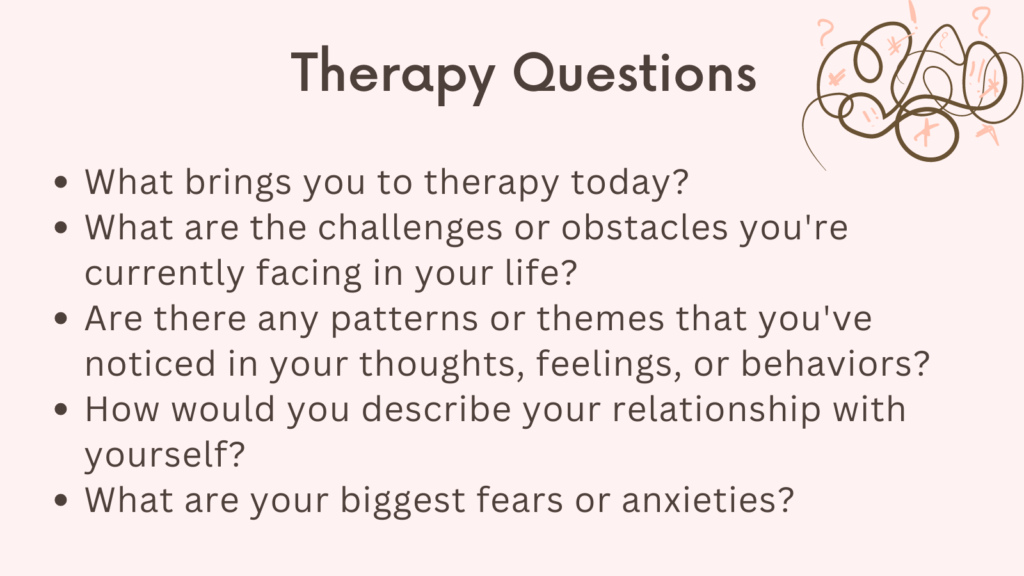This post contains an explanation of the 8 stages of EMDR.
What Are the 8 Stages of EMDR?
EMDR (Eye Movement Desensitization and Reprocessing) therapy consists of eight stages that guide the process of healing trauma.
These stages help individuals address their traumatic experiences, process distressing memories, and develop more adaptive ways of coping. Let’s explore each stage in detail:
Stage 1: History Taking
During this initial stage, the therapist gathers information about the client’s personal history, including their trauma, current symptoms, and overall mental health.
This stage is crucial for establishing a therapeutic relationship, building trust, and understanding the individual’s specific needs and goals.
Stage 2: Preparation
In the preparation stage, the therapist educates the individual about EMDR therapy and explains how it works.
They discuss the potential benefits and potential risks, ensuring the individual feels informed and comfortable throughout the process.
Coping skills and relaxation techniques may also be taught to enhance emotional regulation.
Related: Brainspotting Vs EMDR (Which One Is More Effective?)
Stage 3: Assessment
The assessment stage focuses on identifying the target memories or events to be processed using EMDR.
The therapist and client work together to pinpoint specific vivid memories related to the trauma, along with the associated negative beliefs (cognitions) and disturbing emotions or physical sensations.
Additionally, the individual identifies positive beliefs they would like to adopt as replacements.
Stage 4: Desensitization
The desensitization stage involves reprocessing the targeted memories using bilateral stimulation.
This can be achieved through eye movements, taps, or sounds.
The individual holds the traumatic memory in mind while engaging in the designated bilateral stimulation.
This process allows the distress associated with the memory to decrease gradually, providing relief and a new perspective.
Related: Best 10 EMDR Books
Stage 5: Installation
In the installation stage, the positive self-beliefs identified in Stage 3 are reinforced and strengthened.
Through repeated sets of bilateral stimulation, the individual focuses on the previously identified positive belief while holding the reprocessed memory in mind.
This helps integrate the positive belief at a deep emotional level, enhancing self-esteem and resilience.
Stage 6: Body Scan
Body scan is a stage in which the individual explores any residual bodily tension or discomfort associated with the trauma.
They learn to identify and process these sensations while incorporating bilateral stimulation.
This stage aims to release physical remnants of the trauma and promote body awareness and relaxation.
Related: Brainspotting Risks and Side Effects
Stage 7: Closure
Closure is an essential aspect of each EMDR session.
The therapist ensures that the individual feels grounded and emotionally stable before concluding the session.
If any unfinished processing arises during the session, the therapist provides tools for managing distress until the next session.
This stage promotes a sense of safety and containment within the therapeutic process.
Stage 8: Reevaluation
The reevaluation stage occurs at the beginning of each subsequent session.
The therapist reassesses the individual’s progress since the previous session, identifies any new targets for processing, and reviews the outcomes of previous work.
This stage allows the therapist and client to track progress over time and make necessary adjustments to the treatment plan.
It is important to note that EMDR is a flexible therapy, and these stages may be adapted or modified based on individual needs and circumstances.
The ultimate goal of EMDR therapy is to help individuals heal from trauma, alleviate distressing symptoms, and develop healthier ways of functioning in their daily lives.
Related: Do I Need Therapy Quiz (+FREE Therapy Guide)
How Does EMDR Work?
EMDR (Eye Movement Desensitization and Reprocessing) is a therapeutic approach that helps individuals process traumatic experiences and alleviate associated distress.
While the exact mechanisms of EMDR are still being explored, several theories have been proposed to explain how it works. Here are some key aspects of how EMDR is thought to work:
1. Information Processing
EMDR is based on the idea that trauma-related experiences can become stored in a maladaptive way in memory networks, leading to emotional and cognitive disturbances.
The bilateral stimulation used in EMDR is believed to stimulate the brain’s information processing system, facilitating the reorganization and integration of these distressing memories.
2. Dual Attention
EMDR involves dual attention, where the individual simultaneously focuses on the traumatic memory while engaging in bilateral stimulation.
This dual attention is thought to divert cognitive resources, reducing the vividness and emotional intensity of the traumatic memory.
It allows the individual to gain a detached and more objective perspective, facilitating the processing of the memory.
Related: Why Is Trauma Therapy So Hard? (+Best Trauma Healing Exercises To Support Your Recovery)
3. Adaptive Resolution
Through the process of desensitization and reprocessing, EMDR aims to transform the traumatic memory and associated negative beliefs into more adaptive and positive ones.
The bilateral stimulation is believed to facilitate the activation of the brain’s neural circuits, enabling the integration of new information and creating new connections that promote adaptive resolution.
4. Memory Reconsolidation
EMDR may also involve the process of memory reconsolidation, which suggests that when a memory is reactivated, it becomes temporarily malleable and subject to modification.
By reactivating the traumatic memory during the desensitization phase of EMDR, and pairing it with new positive beliefs and sensations, the memory may be reconsolidated in a way that reduces its emotional impact and creates more adaptive responses.
5. Physiological and Neurological Effects
EMDR has been found to produce changes in physiological and neurological processes.
Bilateral stimulation has been observed to activate the autonomic nervous system, promoting relaxation and reducing stress.
Additionally, neuroimaging studies have shown that EMDR can modulate brain activity, specifically in areas involved in emotional regulation and memory processing. (source)
Related: 7 Trauma Release Exercises To Support Your Recovery After Trauma

Conclusion
It is important to note that EMDR is a complex therapy, and the exact mechanisms underlying its effectiveness are still being investigated.
Different individuals may respond to EMDR in unique ways, and research continues to explore the specific factors that contribute to its therapeutic benefits.
Nevertheless, EMDR has demonstrated efficacy in the treatment of trauma-related disorders, and many individuals have reported significant improvements in their symptoms and overall well-being through this approach.
As always, it is recommended to consult with a trained EMDR therapist for a comprehensive understanding of how EMDR can specifically address your needs and support your healing process.




